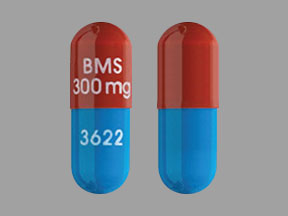Reyataz and Alcohol/Food Interactions
There are 3 alcohol/food/lifestyle interactions with Reyataz (atazanavir).
Caffeine Atazanavir
Minor Drug Interaction
According to the product labeling, clinically significant interactions are not expected between atazanavir and substrates of CYP450 1A2, 2A6, 2B6, 2C19, 2C9, 2D6, or 2E1. No particular precaution or dosage adjustment should be necessary.
References (1)
- (2003) "Product Information. Reyataz (atazanavir)." Bristol-Myers Squibb
Atazanavir Food/Lifestyle
Moderate Food Interaction
ADJUST DOSING INTERVAL: Administration of atazanavir with food enhances oral bioavailability and reduces pharmacokinetic variability. According to the manufacturer, administration with a light meal increased the peak plasma concentration (Cmax) and area under the concentration-time curve (AUC) of a single 400 mg dose of atazanavir by 57% and 70%, respectively, relative to the fasting state. Administration with a high-fat meal resulted in a mean increase of 35% in atazanavir AUC and no change in Cmax compared to fasting. The coefficient of variation of AUC and Cmax decreased by approximately one-half when given with either a light or high-fat meal compared to the fasting state.
MANAGEMENT: To ensure maximal oral absorption, atazanavir should be administered with or immediately after a meal.
References (1)
- (2003) "Product Information. Reyataz (atazanavir)." Bristol-Myers Squibb
Switch to consumer interaction data
Atazanavir High Cholesterol (Hyperlipoproteinemia, Hypertriglyceridemia, Sitosterolemia)
Moderate Potential Hazard, Moderate plausibility
PIs - hyperlipidemia
Treatment with ritonavir alone or in combination with other protease inhibitors (e.g., lopinavir, saquinavir, tipranavir, fosamprenavir) has resulted in substantial increases in the concentration of total cholesterol and triglycerides. These effects have also been reported with other protease inhibitors but may be the most dramatic with ritonavir. The clinical significance of these elevations is unclear. Marked elevation in triglyceride levels is a risk factor for development of pancreatitis. Triglyceride and cholesterol testing is recommended before starting ritonavir (with or without other protease inhibitors) and periodically during therapy. Lipid disorders should be managed as clinically appropriate.
References (6)
- (2022) "Product Information. Norvir (ritonavir)." AbbVie US LLC, SUPPL-25
- (2020) "Product Information. Reyataz (atazanavir)." Bristol-Myers Squibb, SUPPL-44
- (2019) "Product Information. Lexiva (fosamprenavir)." ViiV Healthcare, SUPPL-41
- (2020) "Product Information. Kaletra (lopinavir-ritonavir)." AbbVie US LLC, SUPPL-54
- (2020) "Product Information. Invirase (saquinavir)." Roche Laboratories, SUPPL-25
- (2020) "Product Information. Aptivus (tipranavir)." Boehringer Ingelheim, SUPPL-21
Switch to consumer interaction data
Reyataz drug interactions
There are 574 drug interactions with Reyataz (atazanavir).
Reyataz disease interactions
There are 8 disease interactions with Reyataz (atazanavir) which include:
- heart block
- nephrolithiasis
- renal impairment
- liver disease
- PKU
- hemophilia
- hyperglycemia
- hyperlipidemia
More about Reyataz (atazanavir)
- Reyataz consumer information
- Check interactions
- Compare alternatives
- Pricing & coupons
- Reviews (4)
- Drug images
- Side effects
- Dosage information
- During pregnancy
- Generic availability
- Drug class: protease inhibitors
- Breastfeeding
- En español
Related treatment guides
Drug Interaction Classification
| Highly clinically significant. Avoid combinations; the risk of the interaction outweighs the benefit. | |
| Moderately clinically significant. Usually avoid combinations; use it only under special circumstances. | |
| Minimally clinically significant. Minimize risk; assess risk and consider an alternative drug, take steps to circumvent the interaction risk and/or institute a monitoring plan. | |
| No interaction information available. |
See also:
Further information
Always consult your healthcare provider to ensure the information displayed on this page applies to your personal circumstances.


